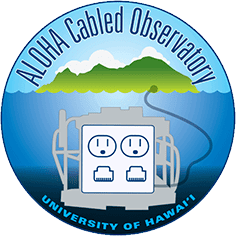The Challenge
Nestled on the floor of the of the Pacific Ocean, three miles below the surface, is the ALOHA Cabled Observatory (ACO). Providing real-time oceanographic data, it is used by scientists all over the world, enabling them to conduct experiments under the water – where maintaining a high reliability network connection is critical.
The solution had to meet several criteria:
- Maintain a flexible and extensible network solution able to adapt to the ACO’s future needs
- Provide secure connections to control equipment on the ocean floor
- Stream terabytes of data over a submarine fiber optic cable reliably
- Ensure resilient connectivity keeping ACO online to collect and transmit data
The Opengear Solution
ACO chose Opengear to provide secure access and resilience. Opengear devices were placed at the AT&T Cable Landing Station on Oahu. Connecting ACO to land by a 147 mile long submarine fiber optic cable that enters through the station, the network equipment manages ACO’s power supply and communications. It also forwards data streams through the University of Hawaii to its Manoa campus.
To provide secure access, Opengear safeguards the connection between the landing station and the data center through an IPsec VPN tunnel. This enables Opengear devices in the data center to contact the station and control resources at the ACO with secure remote access to equipment at the ACO, established from anywhere using an integrated SSL VPN. This ensures that the scientists can easily conduct experiments and maintain security compliance while complying with Federal Information Processing standards. Using Opengear devices, the ACO is also surpassing the Department of Defense requirements for securing unclassified data.
To ensure resilience of ACO sensors, Opengear provides both in-band and Out-of-Band (OOB) control for streaming hydrophone and video data through a high availability failover pair technology of encrypted connections from the AT&T Cable Landing Station to one of the School of Ocean and Earth Science Technology’s (SOEST) data centers.
Opengear’s highly extensible and reliable solution provides resilient connectivity. That with secure access, versatile data management and redundant data storage enables them to plan for future upgrades. Opengear devices safeguard the availability of the underwater connection and the uptime of its land based network and data.
“We’ve all heard of the ‘deep web’, but maintaining the deepest reach of the internet – beneath three miles of water – represents an exciting new frontier and offers a uniquely insightful perspective as we work to better understand our oceans and our planet. We thank Opengear for providing dependable networking solutions for our forays into this underwater frontier.”
– Brian Chee, IT Specialist, University of Hawaii at Manoa
Opengear’s Smart Out-of-Band and redundant failover to cellular technology enables the coordination of computers and devices to offer real time data management. It also helps them achieve redundant copies of all datasets transmitted by the ACO that are stored at different physical locations to ensure safety from disaster.
Aloha Cabled Observatory’s need has been fulfilled and now:
- Has a high availability connection that ensures secure access to equipment at the ocean floor
- Can support future expansion of its equipment and capabilities
- Streams terabytes of data for availability in real time and are redundantly stored at different locations to safeguard against data loss

Scientific Research Customer
The ALOHA Cabled Observatory (ACO) sits on the ocean’s floor, three miles below the water’s surface and sixty miles north of the Hawaiian island of Oahu. The observatory provides real-time oceanographic data using equipment including a hydrophone and pressure sensor, along with instruments for measuring and communicating temperature, salinity, currents, acoustics, and video images. The ACO holds several records associated with its depth: it is the deepest functioning observatory of its kind, the deepest power node on earth, and the deepest extent of the Internet. The data captured and transmitted by these instruments is available to scientists and the public online in real-time.